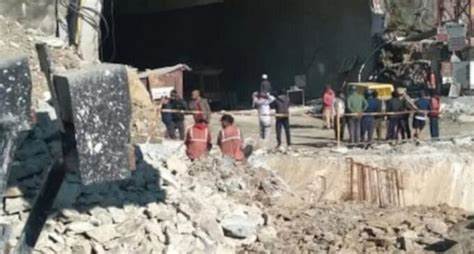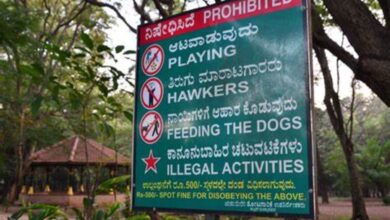Uttarakhand tunnel collapse: PMO takes charge of operations, rescuers to drill vertical hole

Uttarakhand tunnel collapse: PMO takes charge of operations, rescuers to drill vertical hole
The Prime Minister’s Office (PMO) has reportedly assumed control of the rescue operations aimed at reaching workers trapped in the collapsed highway tunnel in Silkyara, Uttarkashi, for the past eight days. The PMO issued a statement late on Saturday, reaffirming the Centre’s commitment to saving the lives of the trapped laborers.
In response to the crisis, the government convened a high-level meeting on November 18 to discuss and explore various options for rescuing the workers. During the meeting, different agencies were reportedly assigned specific alternatives to work on, reflecting a coordinated and multi-agency approach to addressing the challenging situation.
The involvement of the PMO underscores the gravity of the situation and the central government’s proactive role in coordinating and overseeing the rescue efforts. Such incidents often require a collaborative effort from various agencies, and the allocation of specific tasks to different entities aims to ensure a more efficient and focused response to the ongoing crisis.
In the ongoing efforts to rescue workers trapped in the collapsed highway tunnel in Silkyara, Uttarkashi, Mahmood Ahmed, the managing director of the National Highways and Infrastructure Development Corporation Ltd (NHIDCL), has been assigned the crucial responsibility of coordinating with all central agencies involved in the rescue operations. Ahmed is stationed at Silkyara, overseeing the coordination and execution of the rescue efforts.
Additionally, the Uttarakhand government has designated IAS officer Neeraj Khairwal as the nodal officer for coordination. This appointment emphasizes the need for effective coordination and collaboration among various government agencies and stakeholders involved in the rescue operations.
The allocation of specific roles to key officials reflects a concerted and organized approach to handling the crisis. The involvement of experienced personnel from both central agencies and the state administration underscores the seriousness with which the rescue operations are being managed, with the aim of ensuring the safety and well-being of the trapped laborers.
Bhaskar Khulbe, former secretary to the Prime Minister and currently an advisor to the state government, provided insights into the ongoing rescue operations at the collapsed highway tunnel in Silkyara, Uttarkashi. Khulbe, who visited the site on November 18, mentioned that the authorities are aiming to complete the operation within a maximum of 4 to 5 days. He expressed optimism that the rescue might be achieved even sooner. The plan involves simultaneous work on all the discussed options to expedite the process.
While the report could not be independently verified, it outlined five potential options under consideration for the rescue operation:
1. Exploring the possibility of vertical drilling on top of the tunnel.
2. Excavating two escape channels/tunnels on either side of the Silkyara tunnel.
3. Digging a tunnel from the Barkot side.
4. Carrying out the earlier technique of pushing pipes using an auger boring machine.
The simultaneous pursuit of multiple options demonstrates a comprehensive and proactive approach to address the complex challenge of rescuing the trapped workers. The involvement of experienced officials and the coordination between central and state agencies further underscore the gravity and urgency of the situation.
As of November 18, the Uttarakhand Chief Minister announced that the state government is committed to providing food, shelter, and medical care to the families of the 41 workers trapped in the collapsed tunnel in Silkyara. The Chief Minister’s Office issued a statement emphasizing that Prime Minister Narendra Modi is continuously monitoring the updates on the rescue operation, and the state government is extending all possible support to the agencies working at the site.
Recognizing the urgency of the situation, officials have initiated preparations to drill a vertical hole from the top of the hill under which the tunnel is located. This approach is part of the concerted efforts to explore various options simultaneously, as mentioned earlier, to expedite the rescue operation and reach the trapped workers.
The commitment of the state government, coupled with the active involvement of central agencies and the continuous monitoring by the Prime Minister, reflects a comprehensive and collaborative response to address the challenges posed by the collapsed tunnel. The priority remains on ensuring the safety and well-being of the trapped workers as rescue operations continue.
The rescue team faces challenges in drilling horizontally through the debris inside the collapsed Silkyara tunnel. The augur machine used for drilling encountered a setback on November 17 when it broke, leading to a temporary pause in the operation. To address this, a new high-performance auger machine has been flown in to replace the faulty one.
The challenging terrain and the significant amount of debris—60 meters—present a formidable obstacle for the rescue team. Despite successfully inserting pipes designed for the rescue mission into approximately 25 meters of the debris, there remains an additional stretch to cover before reaching the 41 workers who are trapped inside the collapsed tunnel.
The Silkyara tunnel, a crucial part of the Char Dham all-weather road project, is located about 30 km from the district headquarters of Uttarkashi. Given the complexities of the situation, vertical drilling is considered one of the potential options to reach the trapped workers and facilitate their rescue. The continuous efforts and deployment of advanced equipment underscore the determination to overcome challenges and prioritize the safety of the trapped workers.




